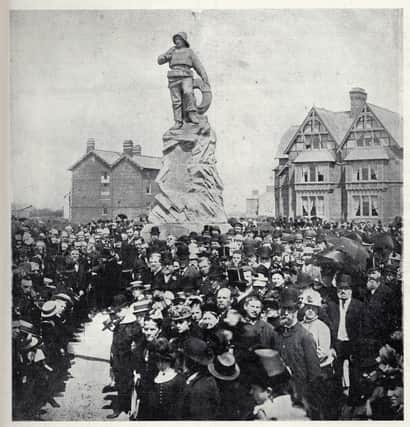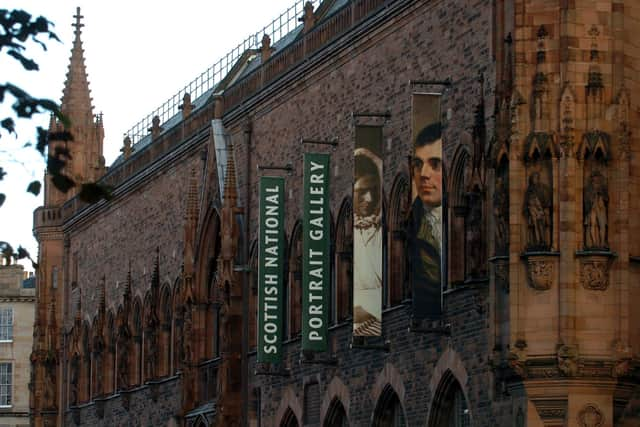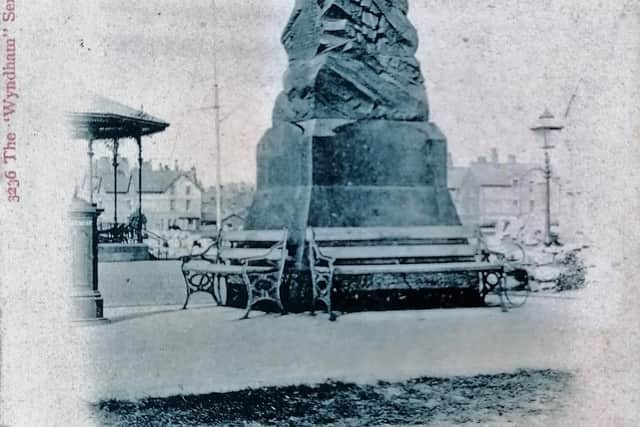Monument to lifeboat crew by Edinburgh sculptor was revolutionary - Andrew Walmsley


An impressive and intriguing lifeboat monument on the promenade in the Lancashire seaside town of St Anne’s on the Sea is the subject for my PhD study at Lancaster University.
Like Blackpool, St Anne’s is a holiday resort often visited by Scots who will probably know it as part of Lytham St Anne’s.


Advertisement
Hide AdAdvertisement
Hide AdThe monument is by Edinburgh sculptor William Birnie Rhind (1853-1933), one of the leading talents of his day who initially established himself in the studio of his father John Rhind (1828-1892).
His reputation rests on works of architectural sculpture, principally in Scotland, and on his figurative work on war memorials commemorating the Boer Wars and the Great War.
Much of his work was done in Scotland, particularly his home city of Edinburgh, where he has had a profound effect on the built environment.
This includes statuary on the Scottish National Portrait Gallery (1890-1906), the Black Watch South African War Memorial (1906-1910), and the Kings Own Scottish Borderers Memorial (1905-1906) on North Bridge.


He was also responsible for the sculpture programme for Jenners department store (1893-1894).
The St Anne’s monument was one of his early works and honours the crew of the St Anne’s lifeboat, Laura Janet who lost their lives, along with most of the crew of the Southport lifeboat, Eliza Fernley, in a disaster of December 1886.
Both crews were attempting to rescue the crew of a German barque Mexico, which, following violent storms, was stranded on sandbanks in the Ribble estuary close to Southport. The crew of the Mexico were actually rescued by the Lytham lifeboat, Charles Biggs.
This disaster remains the most significant one in the British Isles in terms of lives lost and occurred when the fledgling seaside town of St Anne’s was only 11 years old.


Advertisement
Hide AdAdvertisement
Hide AdThe monument, erected in May 1888, became an important symbol for the town, particularly from the 1890s when increased investment ensured that it would become a successful addition to the resort scene in Lancashire.
Following the disaster £30,000 was raised in a short space of time to support bereaved families.
Surplus funds were then used to provide for the building of the monument on St Anne’s promenade along with other graveyard monuments and William Birnie Rhind secured the commissions.
The other short-listed entries for the promenade monument were allegorical figures and an obelisk.
The figurative sculpture makes an interesting contrast to these standard memorial tropes, and it certainly captured the imagination of the Disaster Committee that commissioned it. The Lytham Times, in typical restrained Victorian prose, called it a “most striking design”.
The news of Rhind’s commission was reported in The Scotsman of October 7, 1887 and a model of the statue title with the military/naval motto of “Ready, Aye, Ready” was displayed at the Royal Scottish Academy exhibition of February 1888.
The Dundee Courier of February 28, 1888 reported that “much interest was awakened by the small study of the colossal figure for the lifeboat disaster memorial at St Anne’s-on-the-Sea”.
Rhind attended the unveiling in May 1888, which, by all accounts, was a day of carnival and celebration in St Anne’s.
Advertisement
Hide AdAdvertisement
Hide AdIn historical terms one of the most remarkable aspects of the monument is that it represents an ordinary man, albeit one in unusual circumstances.
In Victorian Britain, it was exceptional for everyday people to be represented in public figurative monumental sculpture, which, as you might expect, usually consisted of likenesses of members of the aristocracy, gentry or members of the military or political elites.
By contrast, Rhind’s lifeboatman was a representation of one of the local fishing communities who made up the bulk of the lifeboat crew, and a photograph of the late coxswain, William Johnson, was used as a basis for the features of the figure.
Interestingly, in the year before the unveiling at St Anne’s, Rhind completed the Black Watch Memorial in Aberfeldy, which is a figure of an ordinary soldier rather than one of the higher ranks.
Like the St Anne’s monument, although it represents the regiment generally, it is actually a depiction of a particular man, in this case a Private Farquhar Shaw, who has an interesting back story as one of three ‘mutineers’ who were executed in the Tower of London in 1743.
It was also unusual for such a large figurative statue of any kind to be placed in a small provincial town.
They were commonplace in the Lancashire cities of Manchester and Liverpool, but other large towns such a Preston and Blackburn had very few at the time.
St Anne’s, with a population of only about 1,500 in the 1880s, was making quite a statement by erecting Rhind’s monument to the heroism of the British everyman.
Advertisement
Hide AdAdvertisement
Hide AdWilliam himself came from a family of masons and sculptors. His grandfather was a stone mason from Banff and his father, John Rhind, was also a mason and stone carver who moved to Edinburgh and established himself as a sculptor with his own studio.
Rhind became an associate and then a full member of the Royal Scottish Academy, a career path that William also followed.
Although William would have probably been quite well known in his time, particularly in Scotland, for his own work and as part of family of sculptors, it is unlikely that his name would resonate with many people today
From my point of view, it would be great to find out a little more about William.
I have come across various sources, including the text of a speech he gave to the Edinburgh Architectural Association in 1908.
These generally show him to be conservative in attitude and with clear views about the potential for sculpture as a moral force within the nation.
What would most interest me is any correspondence about the St Anne’s monument, but any material which reveals more of the man and the artist would be wonderful.
- Andrew Walmsley is an associate lecturer at Lancaster University and any material can be submitted to him at [email protected].
Comments
Want to join the conversation? Please or to comment on this article.
